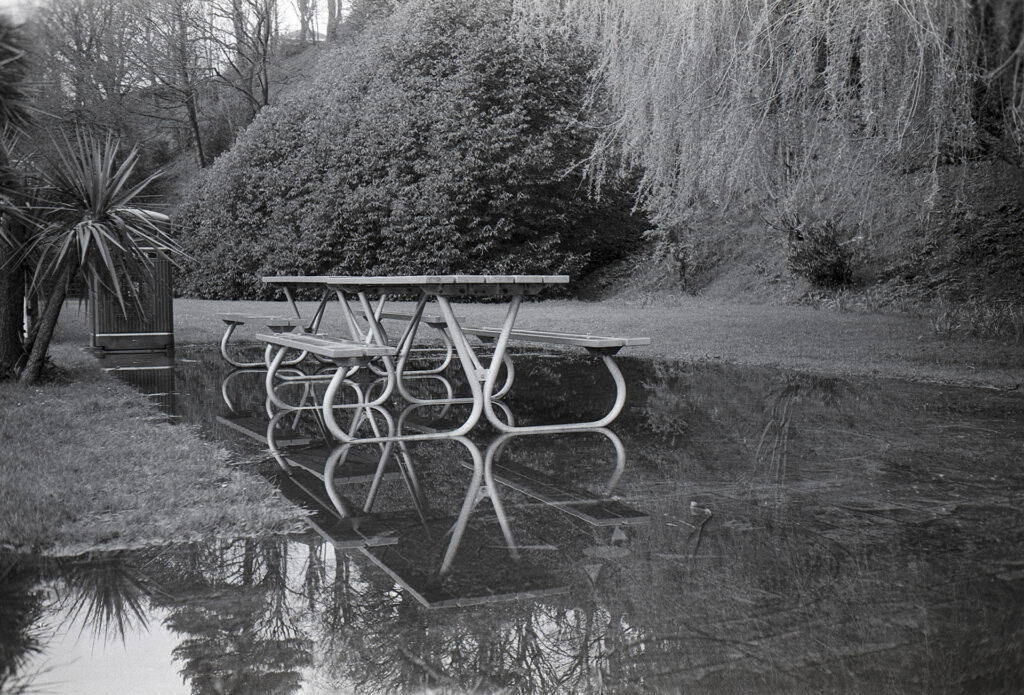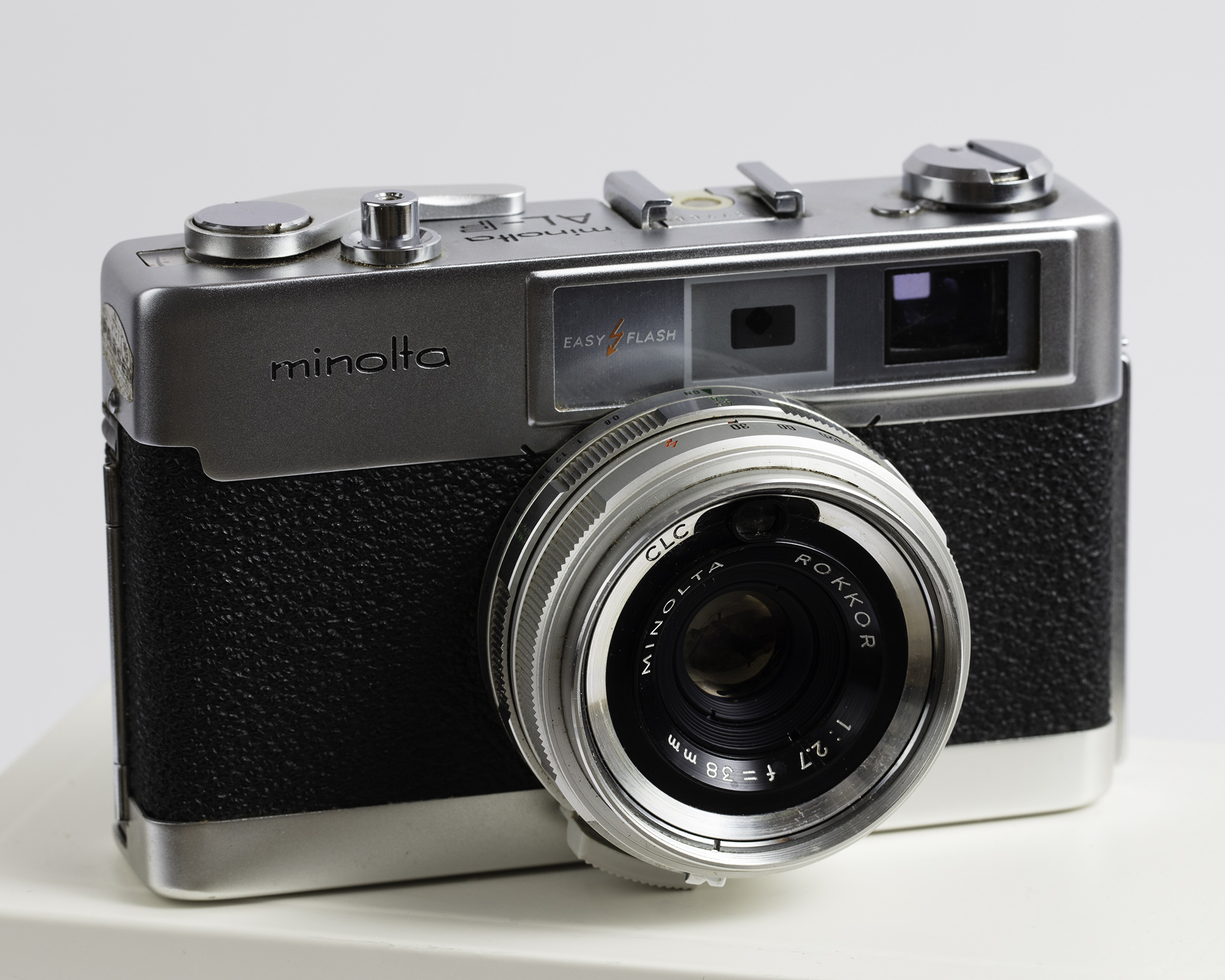Minolta; you might love the brand, or take the view their products were inferior. I know camera branding can elicit these responses. It was a long time ago, but in my late teens I had two Minolta XG2 bodies with various lenses. I was aware that users of some other brands could be sniffy about them, but I felt a real affinity with my XG2s.
Decades later as I started to satisfy my cravings to return to film cameras, there were no XG2s on the horizon that looked right. They either seemed to be tatty or lovely, expensive and in another country. The only Minolta film camera that came my way was an AFZ compact. A crazy flashback to the mid eighties. A Ford XR3i of cameras. Brash plastic, noisy and actually sort of fun; if a little limiting. A roll of Kodak Colorplus produced a few shots that were better than I had anticipated. The AFZ is still in the collection and I ought to load it up again soon, just for the outrageous noises that would negate any attempts at discrete street photography.

Feeling I was missing out on rangefinders, I was trawling the big auction site for Japanese offerings of this type. A Minolta AL-F showed up; not what I was looking for, but there it was. A Minolta intended for easy use, but from a different era than the AFZ. No mistaking the look; this is Japanese design and manufacture in the late sixties. This was a time when Japan was already producing very well engineered motorcycles and the British manufacturers, dominant for so long, still couldn’t wake from their slumber. The little Minolta AL-F was perhaps not so remarkable, but there is no mistaking quality engineering and Minolta had made it look nice too.
So what was I going to get? Seemingly a quite well built shutter priority rangefinder. A Rokkor lens with just 4 elements. Aware that Minolta did know what they were doing, an offer was duly made and accepted. This Minolta AL-F was to include an original box and case that looked in very good condition.
The AL-F’s eventual arrival wasn’t too much of a disappointment and I quickly decided it was called Alf. I suppose this camera would be one of the early ones in that transition to foam light seals, which might put it’s production around the end of the sixties or even start of the seventies. It was no real surprise to find the seals needed replacing. There was some very minor fungus on the glass, but easily accessible. One mark on the rear element seemed more stubborn, so a good chance this was all a lost cause. A clean up top, taking care of the coating on the rangefinder glass as advised. A new battery, chosen carefully for compatibility, then time to load up.

This was going to be a clean and sell arrangement if the results were okay, or a shelf ornament if not. A roll of Kentmere Pan 100 and home process to keep the costs down. I set off with the intention of just getting a serviceable frame or two to put in the intended advert. Some fiddling around during the first few frames. Working out how to find the focus ring instead of the slightly too easy to locate speed adjustment. A few more frames and… what’s this? The controls are actually quite nice, the viewfinder is bright, the rangefinder seems quite easy to use. Oh here we go again, falling for another camera I wasn’t supposed to keep. Try to suspend judgment… the shots might all be badly out of focus.
The film went in Atomal 49 and onto the scanner about two days later. Admiration for the little camera followed instantly. I had used my glasses at the time and wasn’t sure this would have worked. The rangefinder seemed to have been pretty much on the nail each time. Exposures were better than I had hoped for. It really did seem to be able to work out a variety of lighting conditions rather well. Here are some results shot in generally dismal and very wet conditions during April:




The Minolta AL-F does need an adjustment to the shutter button, as the shutter fires right at the end of the button travel. From what I found online, the shutter button was probably very responsive when new. There will be an adjustment under the top cover I think. The stubborn little mark is still there on the rear lens element and I had been convinced it would be an issue. Yet, looking at the scanned negatives, I couldn’t seem to locate any obvious effects. The selling plan is on ice. Just got to see what the little Minolta can do with a roll of a good colour film. So now Alf is having an extended stay at my house.
Share this post:









Comments
Graham Line on Minolta AL-F – Getting to know ALF
Comment posted: 18/07/2024
The issue with my friend's SRT system was that the bodies didn't quite hold up to the three or four rolls of film a day that were being put through them but that's a pretty high level of use -- well beyond what your camera will experience. His solution was having three bodies, two to work with and an extra to cover him during the periodic tune-up trips to the technician's. It was generally adjustments to the winding or exposure meter. Nothing major but maintenance that was needed.
He was a good photograper with any camera, but the Minolta lenses were definitely special.
Comment posted: 18/07/2024
Comment posted: 18/07/2024
Bob Janes on Minolta AL-F – Getting to know ALF
Comment posted: 18/07/2024
Comment posted: 18/07/2024
Comment posted: 18/07/2024
Comment posted: 18/07/2024
Comment posted: 18/07/2024
Ibraar Hussain on Minolta AL-F – Getting to know ALF
Comment posted: 18/07/2024
Not familiar with this camera but am now!
Comment posted: 18/07/2024
Gioacchino Artesiano Pagliuca on Minolta AL-F – Getting to know ALF
Comment posted: 18/07/2024
Comment posted: 18/07/2024
Comment posted: 18/07/2024
Daniel Castelli on Minolta AL-F – Getting to know ALF
Comment posted: 20/07/2024
I taught photo classes for 35+ years and we had quite a few Minoltas donated to the program, both the SLR’s and the rangefinder styles. They produced consistent results, took a beating from high school students, and were friendly to operate.